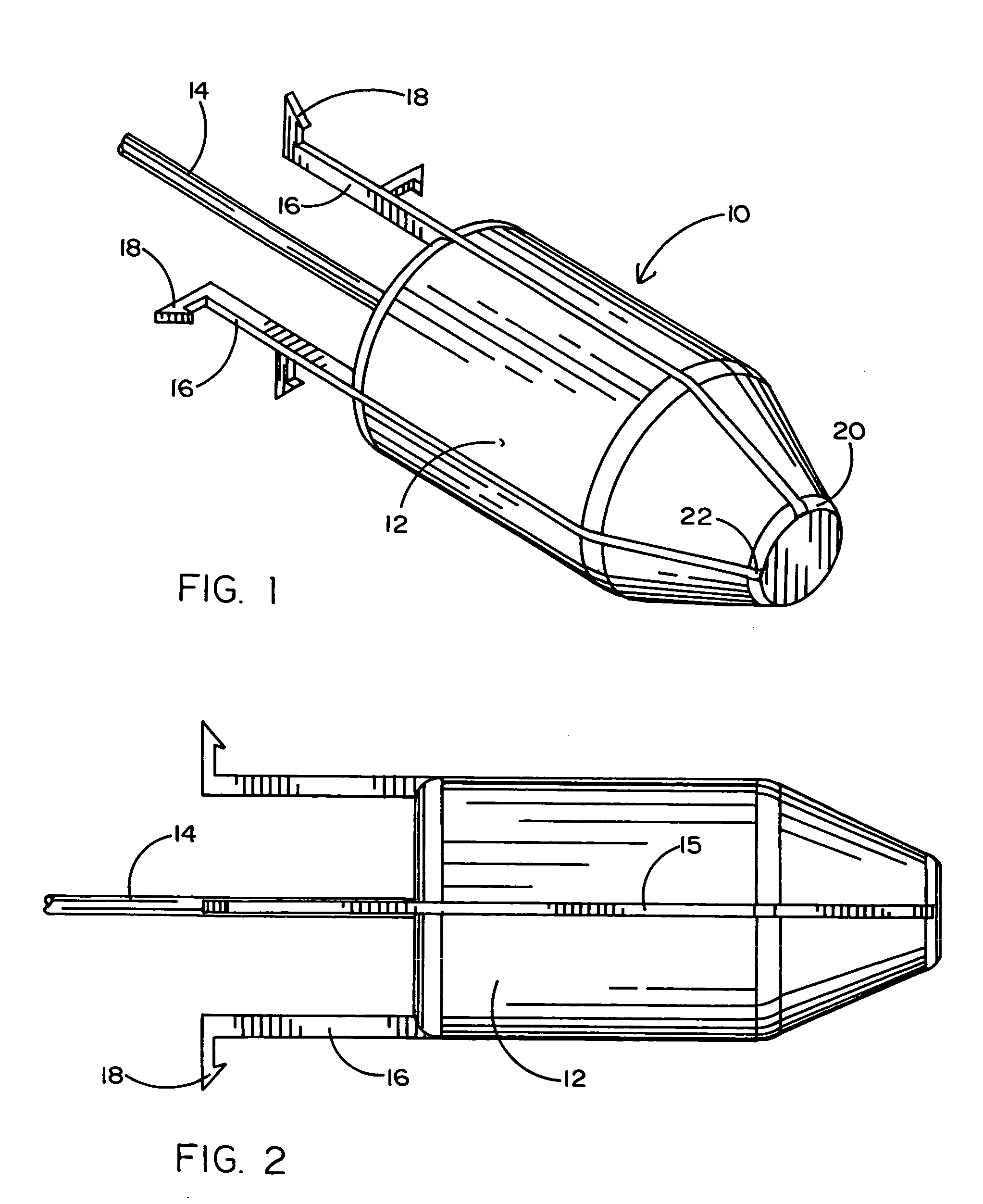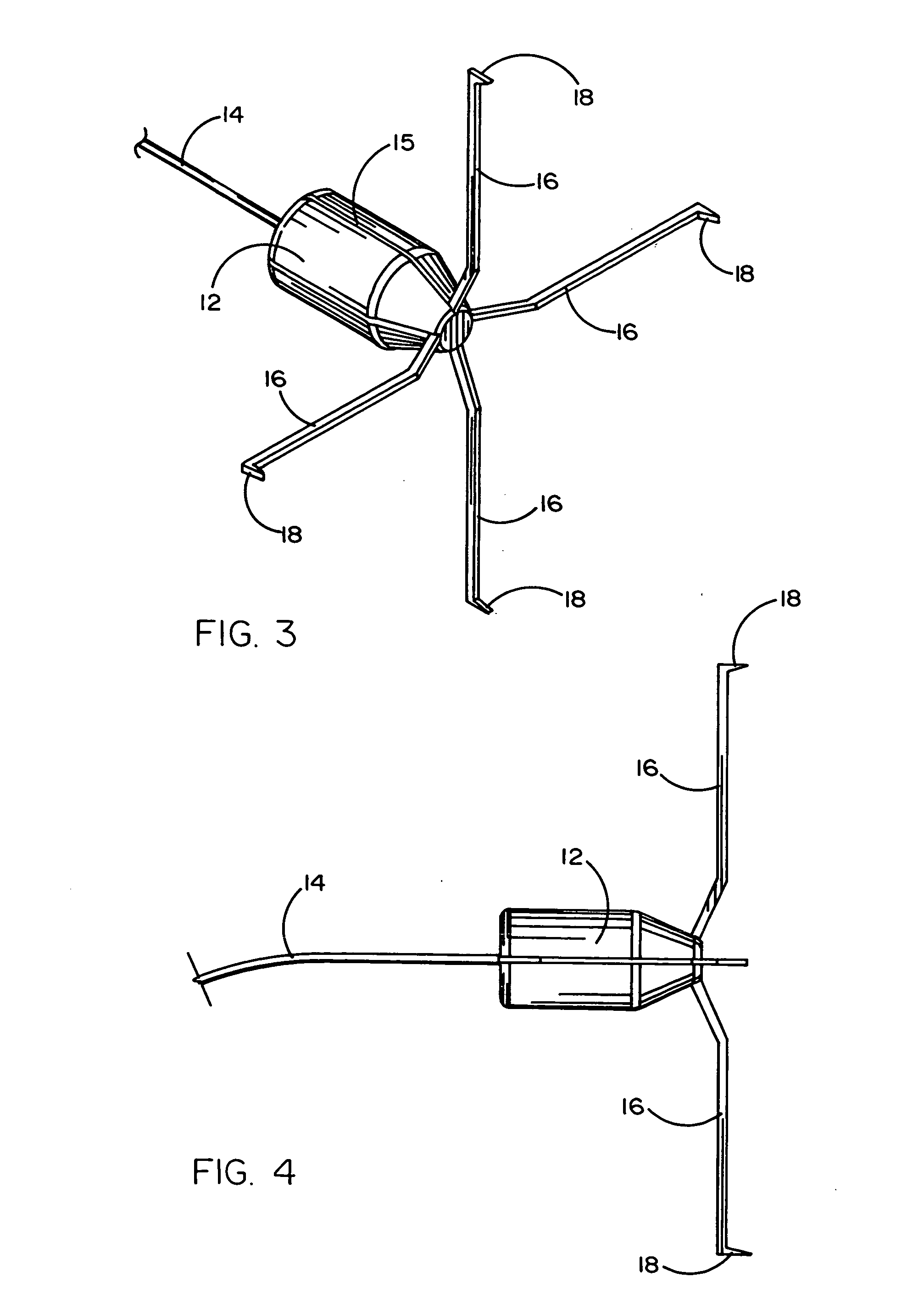Electrical discharge immobilization weapon projectile having multiple deployed contacts
a technology of immobilization weapon and projectile, which is applied in the field of non-lethal weapons, can solve the problems of limited range of effectiveness of conventional taerTM devices, inability to use only one second connector, and inability to achieve the effect of high effective immobilization curren
- Summary
- Abstract
- Description
- Claims
- Application Information
AI Technical Summary
Benefits of technology
Problems solved by technology
Method used
Image
Examples
Embodiment Construction
[0028] Referring first to FIGS. 1-4 and FIGS. 1 and 2 in particular, it will be seen that a first embodiment 10 comprises a projectile 12 attached to a tether cable 14 having two wires connected to opposite polarities. It will be understood that the tether cables shown herein each have a pair of well insulated electrical wires connected to a source of high voltage. Four contact arms 16 extend longitudinally along the surface of the projectile 12 in corresponding grooves 15 and extend rearwardly beyond the projectile. They are each rotatably secured at a nose portion 20 at respective fulcrums 22. The rearward ends of the arms 16 each terminate in a fleshette or barb 18. As shown best in FIGS. 3 and 4, after impact with a target, the arms 16 swing forward around their respective fulcrums 22 until the barbs 18 face forward (to contact the target) and thereby effectively “grasp” the target at multiple spaced locations.
[0029] A second embodiment 30 shown in FIGS. 5-8 is similar to the f...
PUM
 Login to View More
Login to View More Abstract
Description
Claims
Application Information
 Login to View More
Login to View More - R&D
- Intellectual Property
- Life Sciences
- Materials
- Tech Scout
- Unparalleled Data Quality
- Higher Quality Content
- 60% Fewer Hallucinations
Browse by: Latest US Patents, China's latest patents, Technical Efficacy Thesaurus, Application Domain, Technology Topic, Popular Technical Reports.
© 2025 PatSnap. All rights reserved.Legal|Privacy policy|Modern Slavery Act Transparency Statement|Sitemap|About US| Contact US: help@patsnap.com



